Introducing children to art with figurines. Daniela Re, co-founder of Artonauts, speaks.
A successful initiative, born in 2021 and already in its fifth chapter. We are talking about Artonauts, the sticker album dedicated to the history of art, which, after the first album (“From Preistoia to Gauguin”) and subsequent chapters (“The Twentieth Century,” “All World”, “King Solomon’s Ring”) now reaches a new episode, the new album “Art and Science,” which traces through art the inventions of human ingenuity over the centuries. A publishing operation that has now entered the imagination of anyone who has anything to do with teaching art history to children, Artonauts continues to receive cross-appreciation. How did the idea of an art sticker album come about? What are the goals? How can you get people excited about art with stickers? What is the new album about? We talked about these and other topics with Daniela Re, an English teacher, graduate in Foreign Languages and Literature at the University of Milan, and co-founder of the Artonauts project. The interview is by Noemi Capoccia.
NC. Where did the idea of creating an art sticker album come from?
DR. At the time I was working as a teacher at an elementary school in Milan, and every week we took a second-grade class to the Museo del Novecento to see a painting, just one. I’m talking about children from 7 to 8 years old, and at the beginning, some of them maybe felt a little bewildered. They were a little alienated by the new space that was the museum. Therefore, we would sit in front of the painting and usually organize a simple activity that would get them more involved, that would almost get them into the painting. For example, to make them understand the meaning of a Morandi painting, instead of just looking at it, we would have them imagine that they were one of the mugs portrayed in his paintings. They would each tell their own story, and the children themselves, after a moment of reflection, would get up and share their version in front of the paintings, as happened with the Boccioni paintings, which we fortunately had available at the Museo del Novecento. Week after week, I noticed that the children became more and more passionate and with great pleasure began to learn about the paintings and the authors. We, of course, also shared some trivia about the artists’ lives, and this helped to increase their interest. At the end of the year spontaneously many of them brought their parents to the museum and offered to be their own guides. The parents themselves were impressed by the experience and told us how special it was for their children. So one day talking about it to my husband, who worked as an editor of music and art publications, I had an idea. “You know what would be great? Create a game for children based on art. Imagine if instead of the usual figurines we had artwork.” I could see the children’s passion for art, and I thought all it would take was to get them used to it a little bit so that they would get into it, almost as if it were a comic book or a game. My husband was a little skeptical at first (he was a little far from his field), but eventually we decided to try putting together his technical skills as an editor and my pedagogical skills as a teacher. Thus Artonauts was born.
What is the meaning of the name “Artonauts”? Why did you choose this very name?
We wanted to convey the idea of a journey through art, and it seemed appropriate to recall the Argonauts and their quest. But we also wanted it to be something fascinating, like being astronauts, which always evokes a search for something mysterious and challenging. This positive adventure led us to think about combining the idea of an adventure within art, giving space to the Argonauts. We did not want it to be a well-known character guiding the children in their exploration of art, but rather we wanted the children themselves to have an adventure and become protagonists in the discovery of artworks and artists. One evening, while discussing the idea of creating a scrapbook during dinner, we thought of several names, but none convinced us until we proposed Artonauts. It seemed to us that it better recalled the idea of exploring art, so we decided to adopt this name.
What is the purpose of your project?
The purpose of the project is to make art accessible to everyone and to emphasize that it is not just an interest for an elite circle. We noticed that many children, not only in Milan but also in other areas, did not have the opportunity to visit art exhibitions or places like Milan Cathedral itself. Therefore, we decided to bring art directly to them, making it more accessible through a traditional and familiar medium such as a sticker album. This year, we created an album featuring 100 works of art, some more sought-after and some more well-known, precisely to make art accessible to a wide audience. The goal is to provide an opportunity for everyone to approach art, starting with the very young. We have found that many adults also use it and have remarked to us that they have come to appreciate new artists because of the album. Some even told us that they visited exhibitions for the first time, driven by curiosity. This is precisely the spirit of Artonauts: to bring people closer to art and then encourage them to explore it further, perhaps by visiting the works live. We also receive messages from parents telling us how their children, driven by the project, have developed a curiosity for art and asked to see specific works on their birthdays, such as Kandiskij’s "Blue of Sky" in Paris. The goal is not to make everyone an artist, but simply to get them excited about something new and beautiful by introducing art into their lives and daily routines.
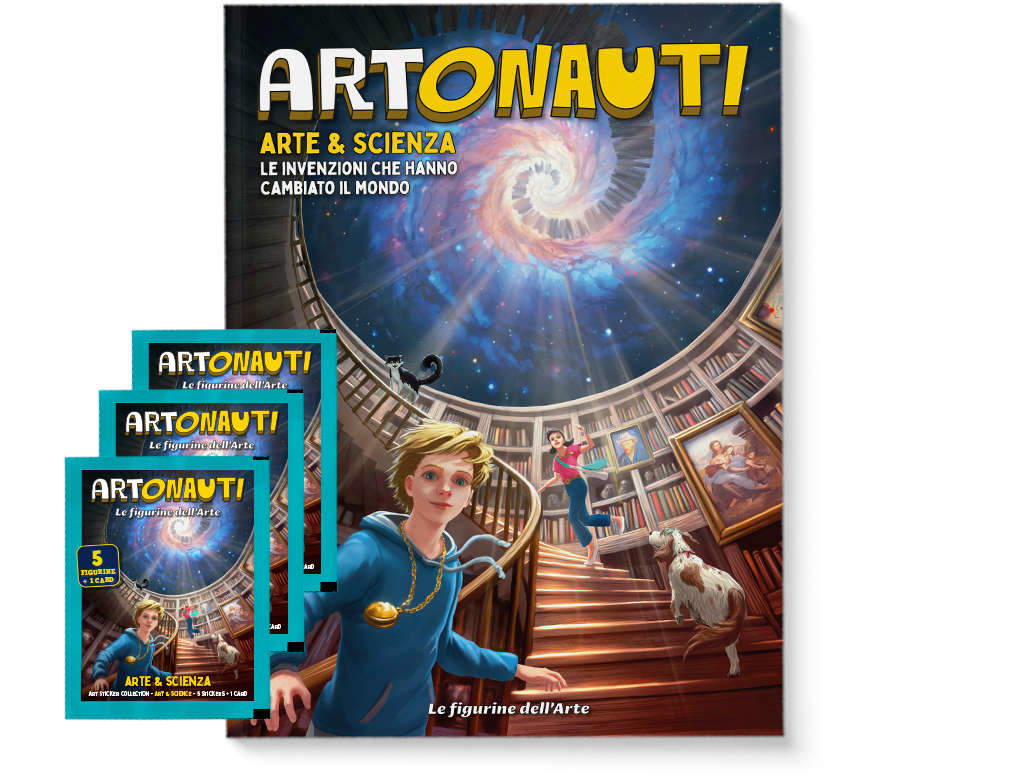 Artonauts
Artonauts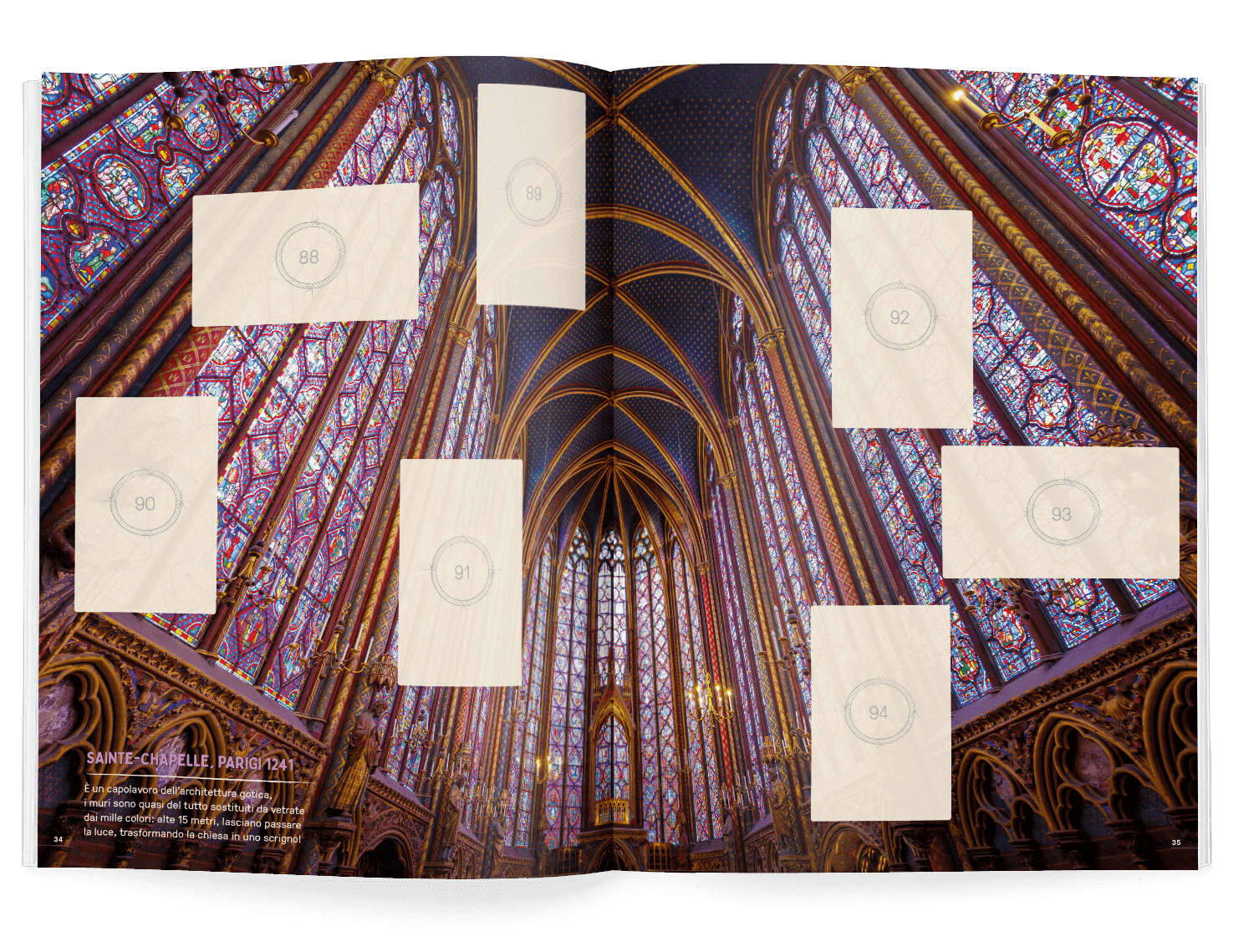 Artonauts - Art
Artonauts - Art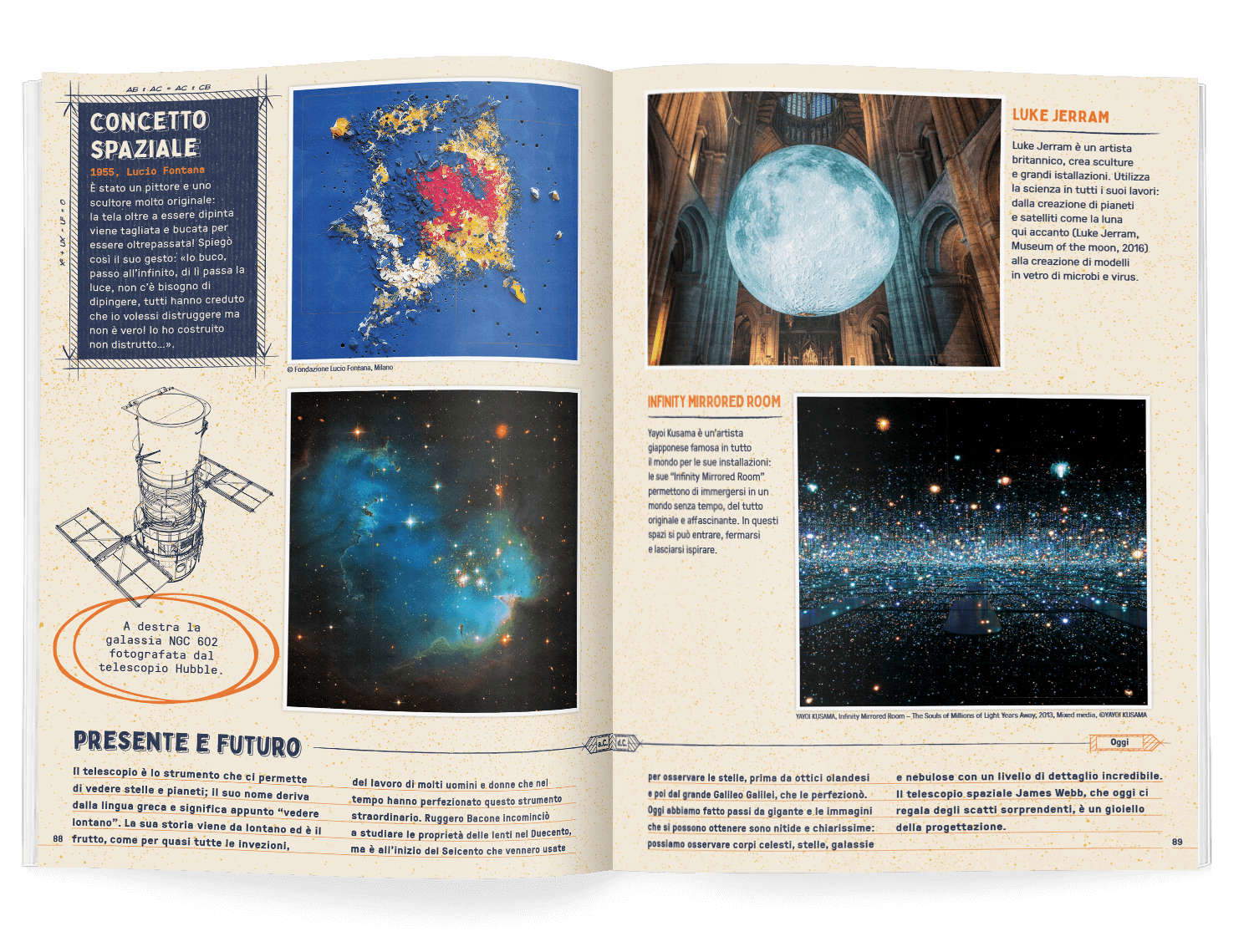 Artonauts - Art
Artonauts - ArtWas there ever a fear that art might be too complex for children?
The initial idea is that. Adults can often have preconceptions about art and its accessibility, while children are much more open to new experiences. It is important to remember that children approach what is offered to them; perhaps it is not immediate to find a passion in them, but they certainly find something that fascinates them. I have had the opportunity to work with many of them, and I have seen how they use the album: some are passionate about architecture, some about history, and some about the color of the mosaic. Even the simple action of swapping cards can be an opportunity to bring them closer to the world of art, getting them step by step into a game that then leads them to appreciate the beauty of art. So it is more a preconception of adults than of children. This is precisely why it is essential to present art to them in an interactive and playful way, so that they can be receptive from an early age. It is important to create these habits over time, and starting from a young age is definitely the best way to do that.
What has been the feedback from children and teens to such a different and innovative collection of cards started in 2019?
It’s really great to hear that the Artonauts album has had such a positive impact on children. True, often products related to movie series or famous people can be more popular, but it’s amazing to see how excited children are to discover and learn through art. It is great to see how they enjoy playing with figurines, learning and swapping cards, recognizing works and artists even from specific details. Understandably, there was some initial apprehension about the project’s reception, but the fact that the children have so fully embraced Artonauts shows that art can be truly engaging and exciting for them, even without the presence of an adult to guide them. It is also great to see how schools are adopting the albums and how children are actively participating in art-related class projects. This positive feedback confirms that our project, although ambitious in its simplicity, is having a significant impact and is helping to spread knowledge and appreciation of art among younger people. So I would say that then the feedback is always positive.
In past editions you have ranged from prehistory to Gauguin to the twentieth century. The latest and fifth edition is based instead on art and science. Why exactly this choice?
I like the idea of combining the theme of science with that of art. Often the sciences are perceived as a distant field reserved for the few, just as art can seem like exclusive territory for specialized artists. It is as if artists and scientists were two separate worlds, each with its own path and specialization. The reality is very different. I like the idea of conveying to children that being a scientist does not mean giving up the ability to appreciate art and vice versa. A person can be both a scientist and an artist, and both roles can exist in one person. History teaches us that there is no clear separation between art and science, and I liked to re-embrace this idea. Therefore, I tried to illustrate art and science as two paths that intersect and express themselves in different ways. In our project, we explored inventions as milestones on which to build our album, looking for characters who embodied this duality, both scientific and humanistic.
Is the sixth edition already in the works? What themes do you think could be considered for a possible and next edition?
We are thinking about it. I am mainly in charge of the conception and creation of the content, while my art director is more in charge of the visual part. Together we select all the images, so we could say that we are still in the embryonic stage. We are trying to figure out how to get closer and closer through art to a specific theme. Each album always conveys a message or content that we want to convey. We start with a seed, plant it and see what grows. Anyway, yes, we are already at work. I am getting input from various readers asking for different topics, from art to music to literature and even specific historical periods. We try to avoid going into too much detail, because our main audience is children and young people and the goal is always to make them fall in love with art and beauty, not to something specific. We are also taking cues from what is happening around us. This year we decided to focus on knowledge, also taking inspiration from a much-debated topic, artificial intelligence. We asked ourselves: can artificial intelligence replace human creativity? That is why we wanted to tell this story through the Arthonauts, characters who travel through time to discover the inventors of the past. The pretext for their travels is the search for Eureka, an artificial intelligence created by a scientist that can solve any problem. The Arthonauts jump from one era to another, from the Sumerians to the Egyptians to the Romans, exploring human inventions, until they find Eureka, represented in the form of a firefly. But their final question addressed to her leads to a revelation: human ingenuity and creativity cannot be replaced. Eureka can process existing data and images, but she cannot invent. This message emphasizes the importance and uniqueness of our creativity. This idea was the spark for the project on art and science, as the history of science shows how it has always been helpful to humanity, never to replace it. Artonauts is divided into a narrative part, which is pure fantasy to engage children and young people, and an artwork and architecture part, which offers information and insights. This dual track allows us to offer an engaging and educational narrative.
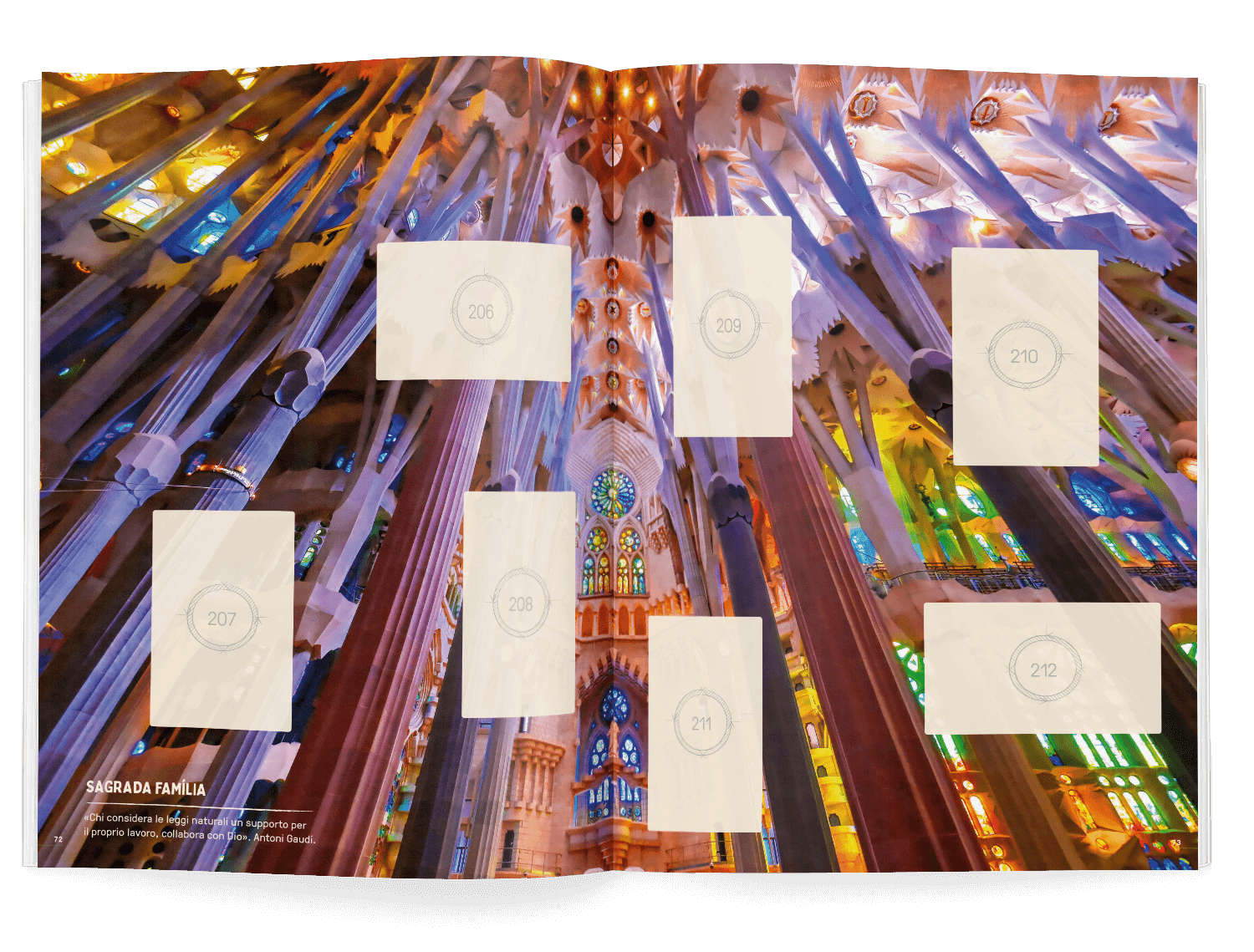 Artonauts - Art
Artonauts - Art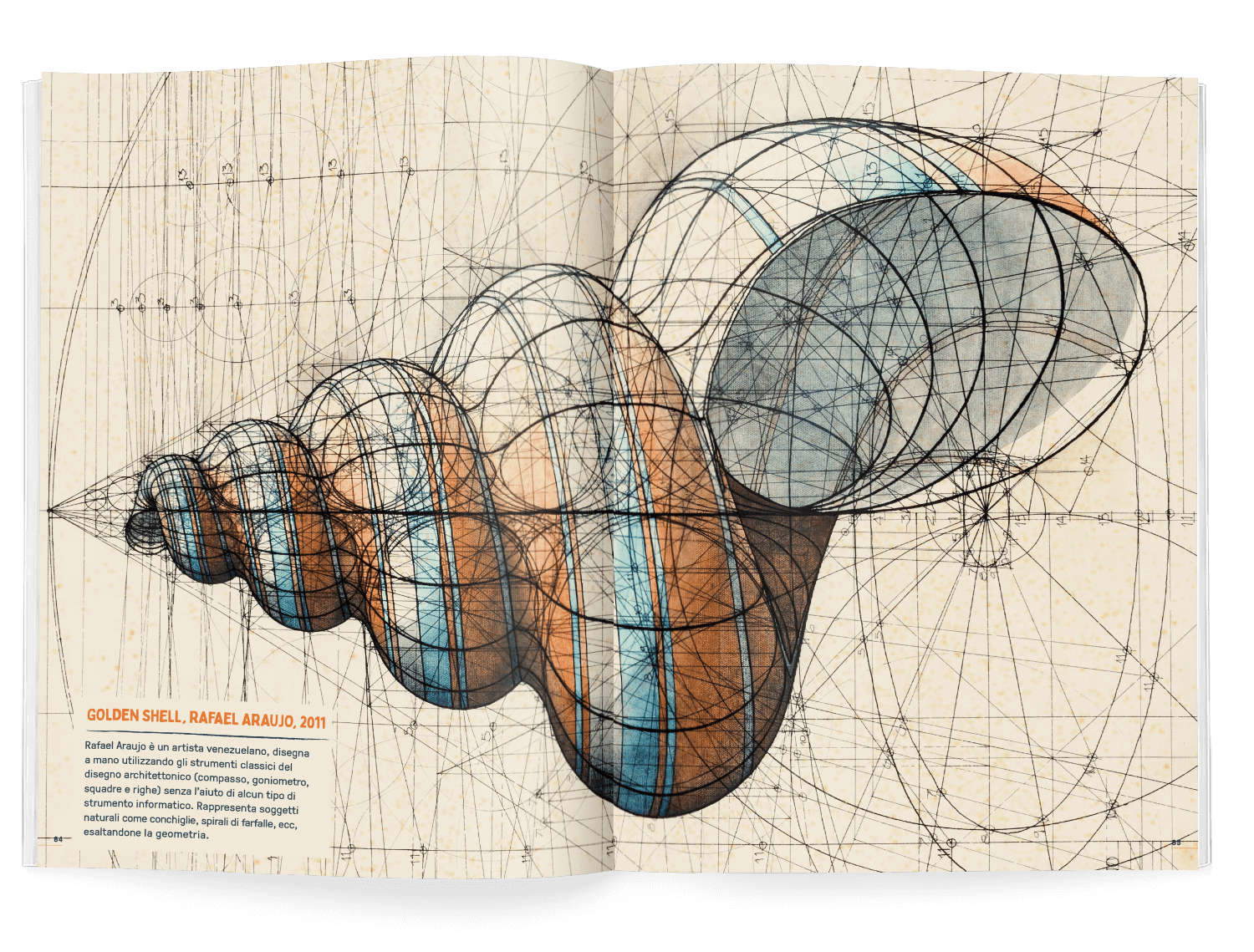 Artonauts - Art
Artonauts - Art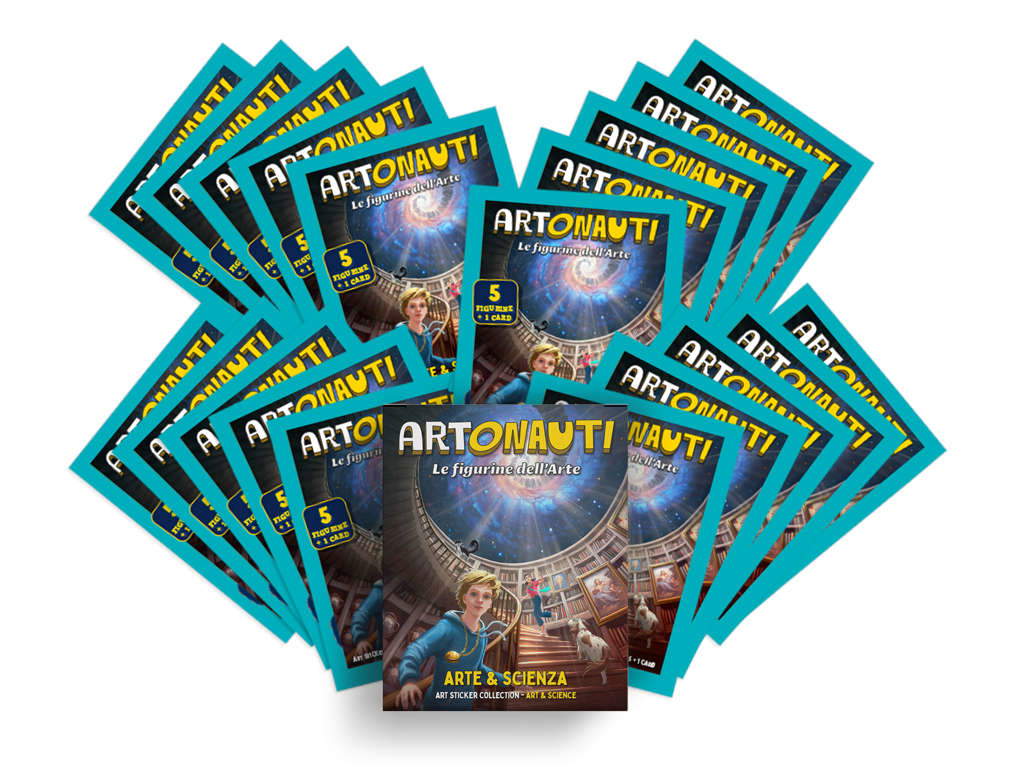 Artonauts - Art
Artonauts - ArtCan the Artonauts project be considered a pedagogical project in order to raise awareness and stimulate the creative thinking of children and young people?
Absolutely. If we consider that art can be the stimulus for not only creative but also inferential and logical thinking, capable of bringing narrative worlds to life, we engage in this process. In particular, in interventions in schools it is teachers who lead this path, often through webinars or lectures with experts such as Dr. Simona Ruggi, professor of art psychology at Catholic University, to offer teachers tools to stimulate children through works of art. Could the use of an album be considered as a game? If well guided by an adult, play can turn into a tool and become a window to the world through storytelling. We actively collaborate with teachers, who are key players in this process, offering workshops that start with the artwork and develop into creative and interdisciplinary activities, involving not only art history but also subjects such as Italian, geometry and math. We have developed supports such as handouts to help adults find effective ways for children to tell stories. Learning in front of a painting for example is a guide we have developed that suggests games, activities, and approaches to engage children and adults in front of works of art.
Everyone can learn from everyone. In your case, what did Artonauts teach you? And what does it still teach you today?
We have found that many people still appreciate the simple desire to share a sticker album with a grandchild or friends. Our main challenge in wanting to stay anchored in the analog world in an increasingly digital age. We continue to believe in the value of sociality. It is encouraging to see that the album is increasingly becoming a social experience, a way to connect with others. It’s great to hear stories of kids getting together for drinks and taking the album with them to exchange stickers. What gives us the most satisfaction are the daily testimonies we receive. We received a photo of Arnaldo Pomodoro attaching one of his Artonauti figurines and creating his social album at his foundation. Pomodoro himself said that anyone who enters can contribute to his social album by attaching a figurine. These gestures confirm that we are moving in the right direction, that these interactions are still vital, and that there is still a need to be together. Our challenge is ongoing, but as long as there are people who are convinced that you can introduce a 7-year-old to art through a sticker album, we will be here to support them.
Warning: the translation into English of the original Italian article was created using automatic tools. We undertake to review all articles, but we do not guarantee the total absence of inaccuracies in the translation due to the program. You can find the original by clicking on the ITA button. If you find any mistake,please contact us.




























